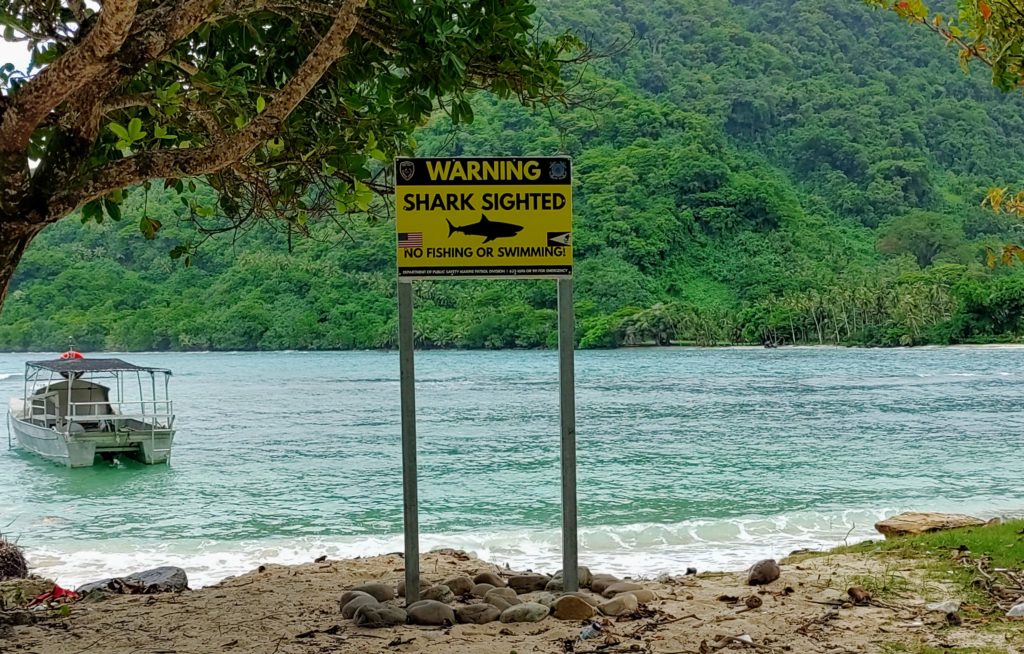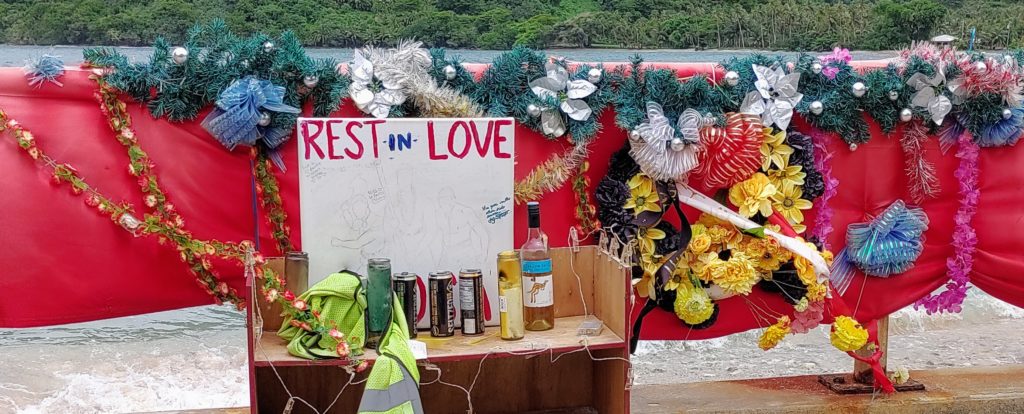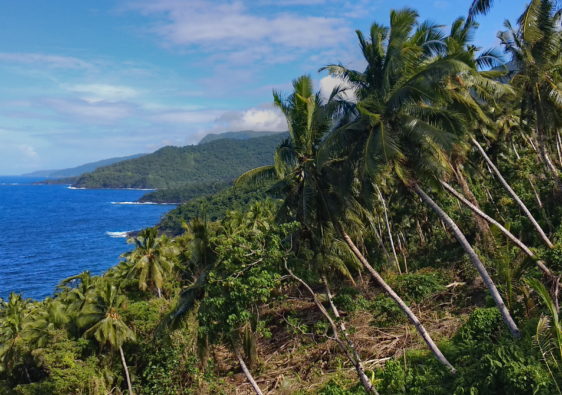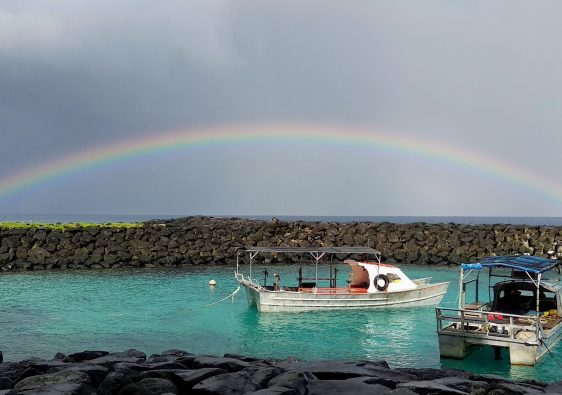On October 14th, A man was found in Vatia with injuries that led local authorities to believe a shark attacked and killed the man.
Fishing is a common activity for locals. In water and throwing nets, Hawaiian slings, spearguns, hand-lining to name a few. When fishing, locals commonly use 12 / 14 gauge solid copper wire as a fish line. The wire is stabbed through the eye or gill of the fish and the wire is worn as a belt around the waist. This technique is not recommended. A trailing tow line or better a catch buoy is recommended. These, however, can be difficult to use in the area because currents can be too strong for one to pull the buoy, possibly leading to new safety dilemmas.
Night fishing is the preferred time for locals to spear fish. It is much easier to find and kill blind, and sleeping fish. However, visibility is low as flashlights will never be as powerful as the sun. Flashlights can also become finicky when low on power. Limited visibility presents its own safety risks, primarily with reduced awareness. Its important to be properly prepared.

Our waters here in Amerika Samoa tend to be on the sharky side, particularly in fish dense reef areas. This is a great sign of a healthy reef, and sharks should probably be targeted for species hunting in small amounts as the law will allow. Sharks in order of my siting occurrences are Grey Reef, Black Tip Reef, White Tip Reef, Galapagos, Tiger, Bull, and Hammerhead. Out in deeper water we have the Oceanic Whitetip Shark, a known human eater in ship and plane wreck scenarios, but they are rare enough I have yet to see one.
Even with all these shark sightings, the sharks here tend to be timid, well fed, and curious, only grey reef commonly show territorial behavior. Uunprovoked shark attacks are are less then 70, world wide for 2021 according to https://www.trackingsharks.com/2021-shark-attack-map/ . I also believe our dear lost uso, wouldn’t want us to use the incident as fear for the sea that he loved, but awareness. Much love uce; losing a fellow friend of the sea is always a tug on the heart.

Here are some tips to being a little safer in the water.
- Swim with a buddy. (Never swim alone)
- Have a plan and share your whereabouts with family or friends. Create a get in, get out call system with a loved one.
- Know your limits. If you are unsure, don’t go.
- Use a tow line or catch buoy for killed fish.
- Avoid night spearfishing.
- If you don’t think you can swim in the conditions without gear (fins, boards, etc). Don’t get in with gear.
“Ua lafolafo le sami.”
Meaning:
The sea is rough.
Times are hard; the people feel disturbed; important events are at hand.
(PROVERBIAL EXPRESSIONS OF THE SAMOANS, Dr. E, Schultz, 1906)
Featured image by Chaloklum Diving of Thailand, Depicting a large Bullshark posted under creative commons.


